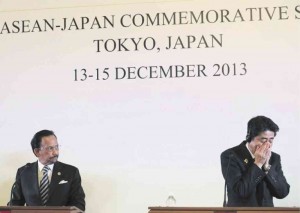‘Photos can lie’—flirting and sneezing edition
The controversy over the Obama “selfie” at the Mandela “funeral” invites us to reconsider the role photographs play in the public space, in the Instagram age.
“Recently, photography has become almost as widely practiced an amusement as sex and dancing,” Susan Sontag wrote in that instant classic, “On Photography”—but she could not have foreseen, all the way back in 1977, that in 2013 smartphones would make picture-taking even easier and photography even more popular.
Or that, in the same year the Oxford University Press declared “selfie” as the word of the year, a self-portrait taken by the Danish prime minister at the memorial (not the funeral) service for anti-apartheid icon Nelson Mandela, while seated in between British Prime Minister David Cameron and US President Barack Obama, would be readily taken as evidence of marital discord or, worse, “mental infidelity.”
We owe that sweeping conceit to New York Post columnist Andrea Peyser, who wrote an insane screed against Obama based primarily on the now-famous photograph, taken by Roberto Schmidt of Agence France Presse, of the three heads of government in the act of taking a selfie, with a stern-faced Michelle Obama off to one side.
Peyser wrote: “With Michelle glowering, the world judging and mental fidelity floating into the abyss, the president leaned into the air space of the cross-legged Danish cupcake, who is known in Copenhagen as a fan of America’s randy TV show ‘Sex and the City.’ It was the memorial equivalent of a bodice-ripper.” (Note the gratuitous definition-by-favorite-TV-show, which portrays Helle Thorning-Schmidt as a sexpot-by-association.)
“Thorning-Schmidt placed her hands dangerously close to Obama’s side. The president’s cackling head moved inches from the Danish tart’s and yards away from his wife’s. Obama then proceeded to absorb body heat from the Dane, which he won’t be feeling at home for a long time.”
But, as it turns out, the interpretation Peyser foisted on Schmidt’s picture was only the residue of a fever—her imagination’s. In a blog post, Schmidt detailed the circumstances in which he took the picture. After the American president delivered his eulogy, he wrote, “Obama took his place amid these leaders who’d gathered from all corners of the globe. Among them was British Prime Minister David Cameron, as well as a woman who I wasn’t able to immediately identify. I later learned it was the Danish Prime Minister Helle Thorning Schmidt …. Anyway, suddenly this woman pulled out her mobile phone and took a photo of herself smiling with Cameron and the US president. I captured the scene reflexively. All around me in the stadium, South Africans were dancing, singing and laughing to honour their departed leader. It was more like a carnival atmosphere, not at all morbid. The ceremony had already gone on for two hours and would last another two. The atmosphere was totally relaxed—I didn’t see anything shocking in my viewfinder, president of the US or not.”
Schmidt also noted that the American first lady was “in” on the scene. “I later read on social media that Michelle Obama seemed to be rather peeved on seeing the Danish prime minister take the picture. But photos can lie. In reality, just a few seconds earlier the first lady was herself joking with those around her, Cameron and Schmidt included. Her stern look was captured by chance.”
Perhaps also by chance, I saw on my social media timelines many journalists I follow (a good number of whom I know well enough to admire) accept the peeved-Michelle narrative-in-the-making and even advanced it. The professional skepticism we all should expect, on ready display when it comes to anything related to Mar Roxas, for example, was conspicuously missing.
Why did we welcome the notion that the Obamas were quarreling, in full view of the tens of thousands who made it to the rain-soaked ceremony and of the millions following on television? Maybe the answer lies in a particular power of photography: Not only can photos lie; they can offer attractive lies.
Consider the photo taken by Koji Sasahara, also of AFP, of Japanese Prime Minister Shinzo Abe in the act of sneezing, as a stern-faced Sultan Bolkiah of Brunei looks on. This must have been one of several hundred photos moved by AFP during the Japan-Asean summit meetings in Tokyo. But why did China Daily, the English-language newspaper of the Communist Party of China, decide to publish the unflattering photo? On its website, the sneezing Abe illustrates a story headlined “Statement seen as singling out China’s air zone.”
“In one version of its utility, the camera record incriminates,” Sontag wrote. The Obama selfie is a perfect example of this use. “In another version of its utility, the camera record justifies.” I think the Abe photograph is an example of this second use; it justifies official Chinese disdain for a Japanese leader who can say No.
* * *
On Twitter: @jnery_newsstand
















